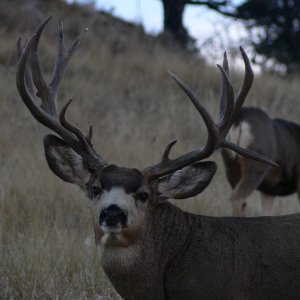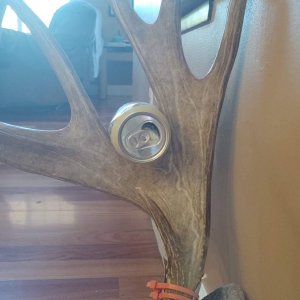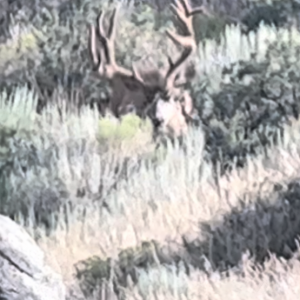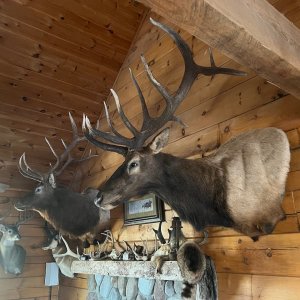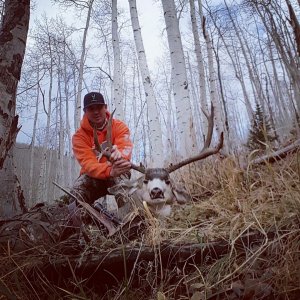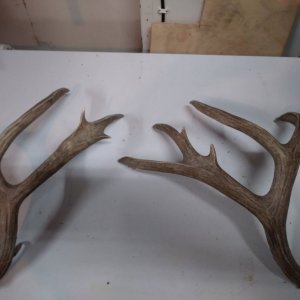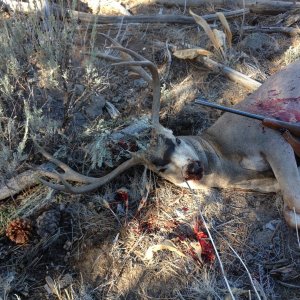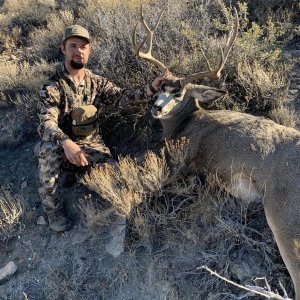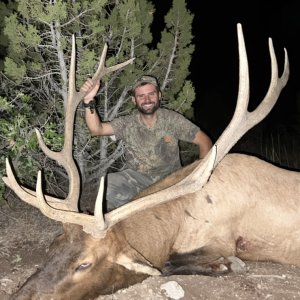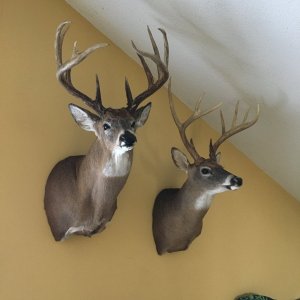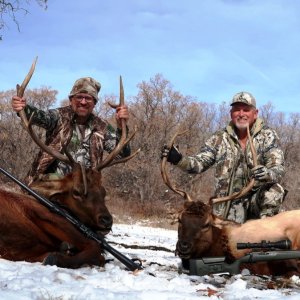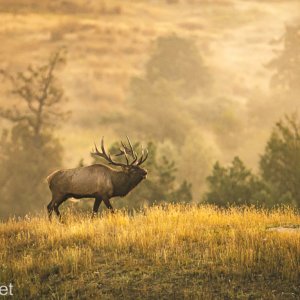BeanMan
Long Time Member
- Messages
- 6,901
My Father passed away last Saturday night, it is an event which has rocked my world, i hesitated about posting it here, so here goes. He was 86 and he and my Mother had been married 65 years. My Mom is till with us. Dad served as a Marine during the Korean conflict. He initially attended the University of Colorado and became a memeber of The Rocky Mountain Rescue group, my Mom was also a member and met during a rescue. They married and then moved to Oregon where Dad got a degree in Forestry and then a job as the USFS Snow Ranger for the Berthoud Pass, Winter Park, A-Basin, and Loveland ski areas. He made a career out of The Forest Service and Snow Science where he founded the first regional avalanche forecasting program in the nation that later became The Colorado Avalanche Information Center. He raised three boys and was a great Father. I pent a lot of time on skis and around avalanche control with him.
I’ll share this that a friend and colleague wrote about him. Deep Powder and Steep Slopes Dad, I love you and miss you.
Art Judson
Written by Ron Perla September 5, 2016
Once upon a time there were a small number of ski mountaineers employed by the US Forest Service. They were called snow rangers. They are nearly extinct.
They arose early, almost every winter morning, and spent their day protecting the public from avalanches. They studied snow, weather, and avalanche activity, they closed and opened ski runs and highways, they tossed explosives or fired artillery to release avalanches, they issued public warnings. When all else failed and an avalanche struck, they mobilized for the rescue operation.
Art Judson, known to many of us as Jud started as a pioneer USFS Snow Ranger at Berthoud Pass, working with legendary, Dick Stillman, both trying to win a battle against Colorado’s notorious deep slab avalanches. Like all the dedicated few on the front lines facing the avalanche hazard, Jud had his share of the inevitable narrow escapes. Later, he brought his real world, avalanche experiences to the USFS Experiment Station, Fort Collins, where he became a dedicated research scientist in Pete Martinelli’s Alpine Snow and Avalanche Project, destined to become the USFS National Avalanche Project. Thus, Jud belonged to the highly select few who in one lifetime could call themselves research scientists and snow rangers.
Jud was a few years ahead of me in all respects. When I started a parallel career at Alta, Utah in 1966, we didn’t have a large pedagogy of avalanche research to build on. We studied with great interest Jud’s growing list of contributions, published in scientific journals and international conference proceedings, especially his work on the properties of alpine snow. Eventually, we performed our own Alta measurements of alpine snow properties with financial support from Pete’s Project, and building upon the earlier research of Pete and Jud.
One of our main Alta problems was a road beneath a nasty group of avalanche paths. Jud took a giant step to help. He traveled to Canada to observe the avalanche forecasting and control program for the newly opened Trans Canada highway across Rogers Pass. Sections of this highway were threatened by avalanches more monstrous than the ones at Berthoud and Alta. At Rogers pass, Jud met the patriarch of Canadian avalanche research, Noel Gardner, who innovated new methods for evaluating and controlling the Rogers Pass hazards. Jud and Noel hit it off famously. So much so that Noel felt that Jud was the unique person to collaborate with to document for posterity the successful Roger’s Pass methods. Together they created a fine publication, revealing methods which found their way into our Alta road program, into my own research, and as an important chapter in the USFS Avalanche Handbook.
Never forgetting his narrow escapes, Jud recognized at the onset of his research career that trying to outguess avalanches involved a balance of the expected and unexpected, in short, probabilities. New statistical methods were called for, not just for Berthoud or Alta, but methods applicable west wide. The problem is that statistics require data, much more than were available from Berthoud, Alta, and a few other stations. Thus, Jud founded a Westwide avalanche data collection and information network. As prerequisite, he proposed to standardize existing snow and avalanche terminology, and to include new measurements previously ignored. These would be the inputs needed to evaluate the avalanche hazard at a growing number of stations as they came on deck to join the Westwide program.
In 1969, Jud made another trip to Canada. This time to attend the first North American avalanche conference, held at the University of Calgary. Jud presented a paper on his proposed inputs. His presentation was a tour de force. In fact, at the time it was somewhat overwhelming for the audience, as is often the case when new ideas confront a symposium audience for the first time. But in years to come, slowly and surely, his input standardization took hold.
In 1972, the USFS transfered me from Alta into Pete’s Alpine Snow and Avalanche Project at Fort Collins. There I was able to witness the growing Westwide network, and to witness Jud at work, inputing data to the USFS computer, tweaking a complex, evolving model, and examining the latest computer outputs. Did they make any sense? Were there statistical patterns? Did they discriminate the expected from the unexpected? It was difficult research. Jud was open to suggestions. Ideas from others were appreciated and tested. For example, I remember one day suggesting that he experiment changing his input equation for wind direction. He tweaked his model accordingly, but output statistics did not improve. The new snow variable, inputed into Jud’s avalanche model, kept on smothering the other variables. This brought up a related problem. Existing weather models did a poor job predicting the amount of new snow falling in the Colorado mountains. Jud worked closely with meteorologists at Colorado State University to develop reliable models for predicting new snow amounts.
His avalanche statistics, published in scientific journals told it the way it is: here are the statistics, here are the conclusions. Jud presented similar messages at the USFS National Avalanche schools, minus all the jargon that went into the scientific literature.
Jud and I became lifelong friends, exchanging family visits in Fort Collins. He maintained a second home in Steamboat where we once stayed to investigate a skier fatality caused by a slab avalanche near the local ski area. We climbed up to the start zone of the slab avalanche , measured snow propeties just as we had done independently many years ago at Berthoud and Alta. Other times, we hiked together in the mountains, photographing snow and avalanche phenomena for the USFS Avalanche Handbook.
In 1974, I moved to Canada. We stayed in contact as the years passed on a variety of snow and avalanche problems. After all these years, I believe Jud and I still agree that avalanche forecasting is forever burdened with uncertainty. We prefer to emphasize avoiding avalanche paths, rather than gambling on statistics and probability, or counting on some gizmo to save your life.
Jud gets along well with people. He accepts people for who they are, makes the best of the working relationship. Not mentioning names, that included working with several avalanche pioneers who could be difficult in the extreme. I think they appreciated Jud’s crystal clear, urbane personality, his enthusiasm for snow and avalanche work, just like them, he had worked in and survived the real world of Avalanches
I’ll share this that a friend and colleague wrote about him. Deep Powder and Steep Slopes Dad, I love you and miss you.
Art Judson
Written by Ron Perla September 5, 2016
Once upon a time there were a small number of ski mountaineers employed by the US Forest Service. They were called snow rangers. They are nearly extinct.
They arose early, almost every winter morning, and spent their day protecting the public from avalanches. They studied snow, weather, and avalanche activity, they closed and opened ski runs and highways, they tossed explosives or fired artillery to release avalanches, they issued public warnings. When all else failed and an avalanche struck, they mobilized for the rescue operation.
Art Judson, known to many of us as Jud started as a pioneer USFS Snow Ranger at Berthoud Pass, working with legendary, Dick Stillman, both trying to win a battle against Colorado’s notorious deep slab avalanches. Like all the dedicated few on the front lines facing the avalanche hazard, Jud had his share of the inevitable narrow escapes. Later, he brought his real world, avalanche experiences to the USFS Experiment Station, Fort Collins, where he became a dedicated research scientist in Pete Martinelli’s Alpine Snow and Avalanche Project, destined to become the USFS National Avalanche Project. Thus, Jud belonged to the highly select few who in one lifetime could call themselves research scientists and snow rangers.
Jud was a few years ahead of me in all respects. When I started a parallel career at Alta, Utah in 1966, we didn’t have a large pedagogy of avalanche research to build on. We studied with great interest Jud’s growing list of contributions, published in scientific journals and international conference proceedings, especially his work on the properties of alpine snow. Eventually, we performed our own Alta measurements of alpine snow properties with financial support from Pete’s Project, and building upon the earlier research of Pete and Jud.
One of our main Alta problems was a road beneath a nasty group of avalanche paths. Jud took a giant step to help. He traveled to Canada to observe the avalanche forecasting and control program for the newly opened Trans Canada highway across Rogers Pass. Sections of this highway were threatened by avalanches more monstrous than the ones at Berthoud and Alta. At Rogers pass, Jud met the patriarch of Canadian avalanche research, Noel Gardner, who innovated new methods for evaluating and controlling the Rogers Pass hazards. Jud and Noel hit it off famously. So much so that Noel felt that Jud was the unique person to collaborate with to document for posterity the successful Roger’s Pass methods. Together they created a fine publication, revealing methods which found their way into our Alta road program, into my own research, and as an important chapter in the USFS Avalanche Handbook.
Never forgetting his narrow escapes, Jud recognized at the onset of his research career that trying to outguess avalanches involved a balance of the expected and unexpected, in short, probabilities. New statistical methods were called for, not just for Berthoud or Alta, but methods applicable west wide. The problem is that statistics require data, much more than were available from Berthoud, Alta, and a few other stations. Thus, Jud founded a Westwide avalanche data collection and information network. As prerequisite, he proposed to standardize existing snow and avalanche terminology, and to include new measurements previously ignored. These would be the inputs needed to evaluate the avalanche hazard at a growing number of stations as they came on deck to join the Westwide program.
In 1969, Jud made another trip to Canada. This time to attend the first North American avalanche conference, held at the University of Calgary. Jud presented a paper on his proposed inputs. His presentation was a tour de force. In fact, at the time it was somewhat overwhelming for the audience, as is often the case when new ideas confront a symposium audience for the first time. But in years to come, slowly and surely, his input standardization took hold.
In 1972, the USFS transfered me from Alta into Pete’s Alpine Snow and Avalanche Project at Fort Collins. There I was able to witness the growing Westwide network, and to witness Jud at work, inputing data to the USFS computer, tweaking a complex, evolving model, and examining the latest computer outputs. Did they make any sense? Were there statistical patterns? Did they discriminate the expected from the unexpected? It was difficult research. Jud was open to suggestions. Ideas from others were appreciated and tested. For example, I remember one day suggesting that he experiment changing his input equation for wind direction. He tweaked his model accordingly, but output statistics did not improve. The new snow variable, inputed into Jud’s avalanche model, kept on smothering the other variables. This brought up a related problem. Existing weather models did a poor job predicting the amount of new snow falling in the Colorado mountains. Jud worked closely with meteorologists at Colorado State University to develop reliable models for predicting new snow amounts.
His avalanche statistics, published in scientific journals told it the way it is: here are the statistics, here are the conclusions. Jud presented similar messages at the USFS National Avalanche schools, minus all the jargon that went into the scientific literature.
Jud and I became lifelong friends, exchanging family visits in Fort Collins. He maintained a second home in Steamboat where we once stayed to investigate a skier fatality caused by a slab avalanche near the local ski area. We climbed up to the start zone of the slab avalanche , measured snow propeties just as we had done independently many years ago at Berthoud and Alta. Other times, we hiked together in the mountains, photographing snow and avalanche phenomena for the USFS Avalanche Handbook.
In 1974, I moved to Canada. We stayed in contact as the years passed on a variety of snow and avalanche problems. After all these years, I believe Jud and I still agree that avalanche forecasting is forever burdened with uncertainty. We prefer to emphasize avoiding avalanche paths, rather than gambling on statistics and probability, or counting on some gizmo to save your life.
Jud gets along well with people. He accepts people for who they are, makes the best of the working relationship. Not mentioning names, that included working with several avalanche pioneers who could be difficult in the extreme. I think they appreciated Jud’s crystal clear, urbane personality, his enthusiasm for snow and avalanche work, just like them, he had worked in and survived the real world of Avalanches

